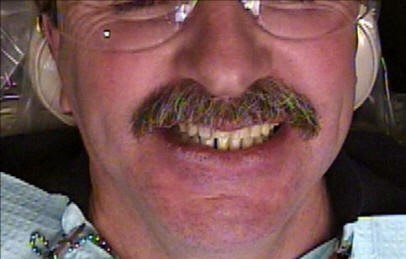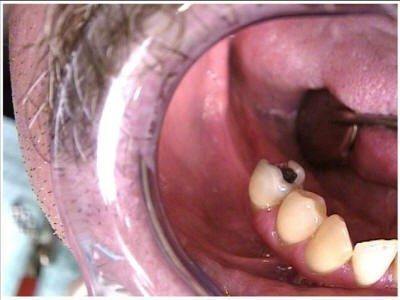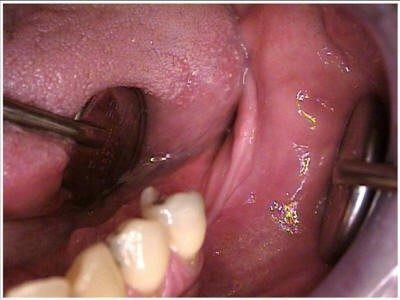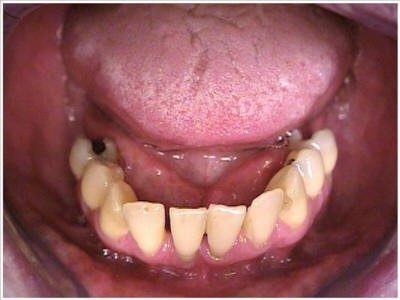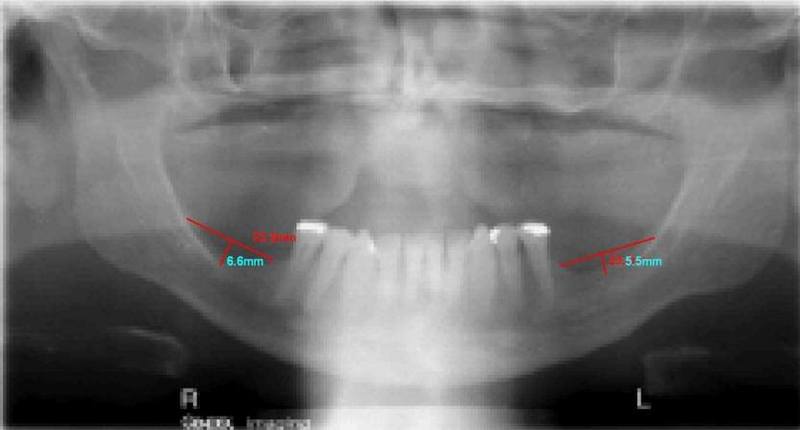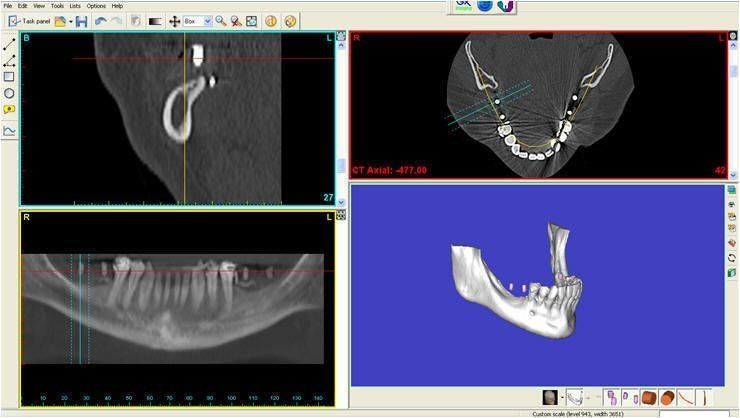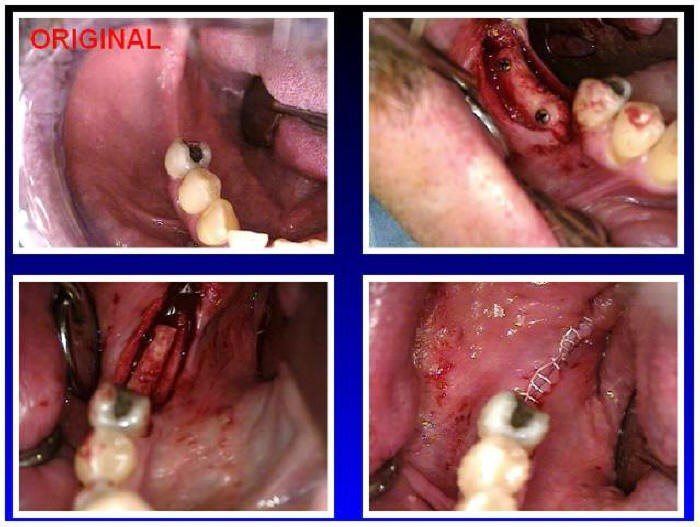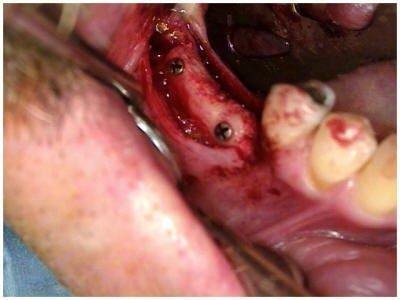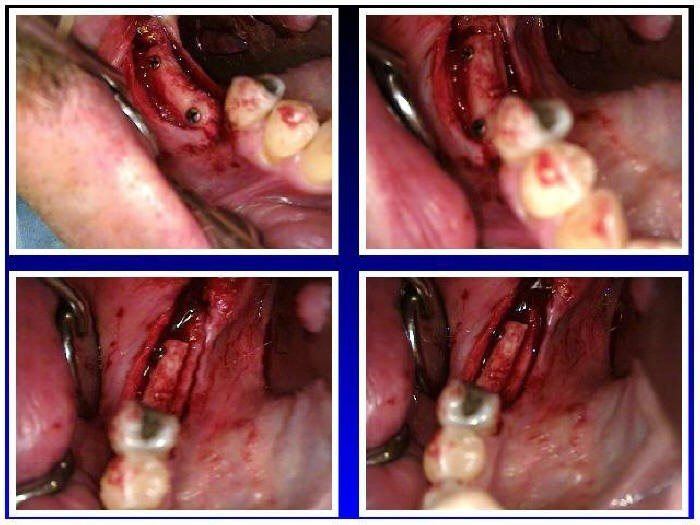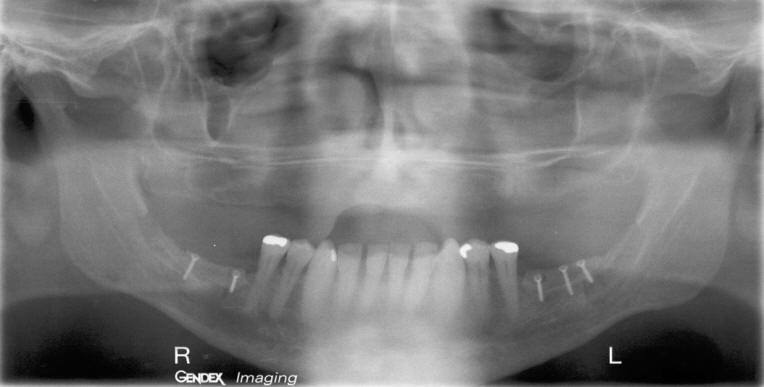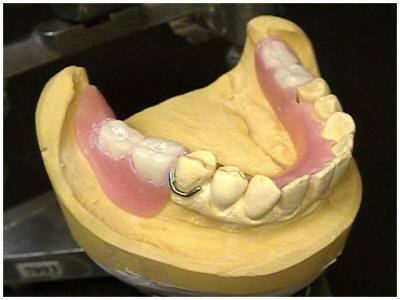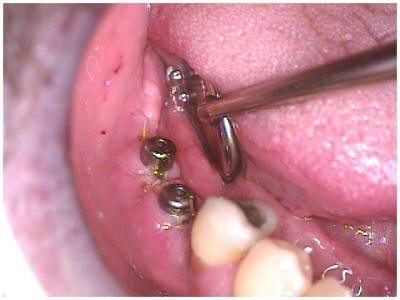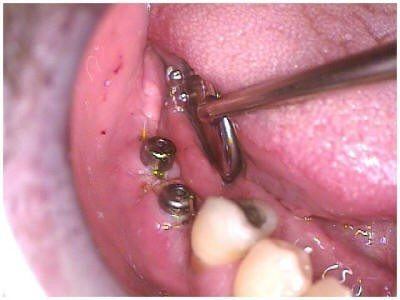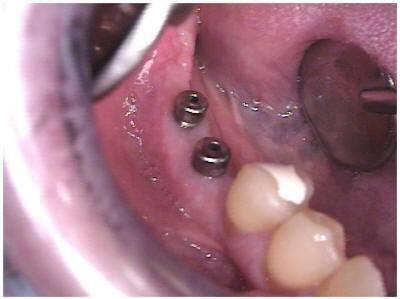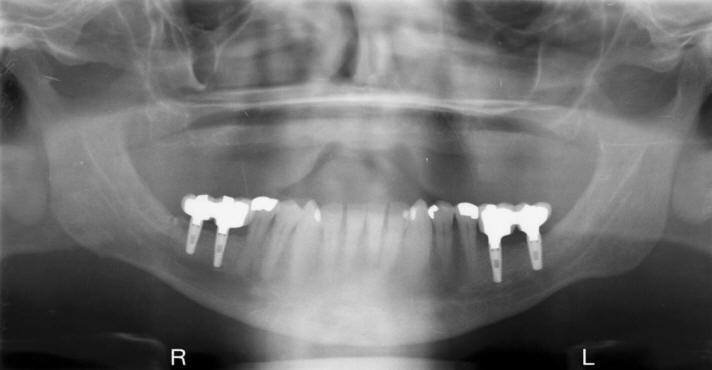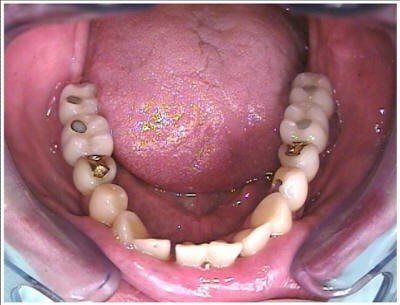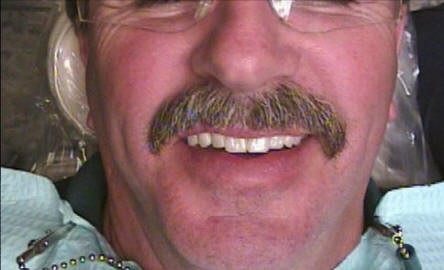POSTERIOR MANDIBULAR BONE GRAFT WITH IMPLANTS & SCREW-RETAINED PFM CROWNS
RAMUS GRAFT TO MANDIBLE
For dental implants to be successful, the jawbone must have enough bone to support them. You may not have enough bone because of tooth loss from periodontal (gum) disease, injury or trauma, or a developmental defect. If your jaw is too short (up and down), too narrow (side to side) or both, you will need a procedure to add bone to your jaw before implants can be placed.
Bone augmentation is a term that is used to describe a variety of procedures that are used to “build” bone so that dental implants can be placed. These procedures typically involve grafting (adding) bone or bonelike materials to the jaw and waiting for the grafted material to fuse with the existing bone over several months.
There are several different procedures that can be used for bone augmentation. Your dentist will select a procedure depending on the type, location and number of implants to be used. If you need a bone graft, it is important that you and your dentist discuss all of the options available to you.
After a bone-augmentation procedure, dentists usually wait 1 to 12 months before placing implants, although some dentists may place them sooner.
Where Does the Bone Come From?
Most bone-augmentation procedures involve the use of bone grafts. The best material for a bone graft is your own bone, which most likely will come from your chin or ramus (the back part of your lower jaw). If our prosthodontist cannot get enough bone from these areas, he may need to get bone from your hip or shin bone (tibia) instead. The hip is considered to be a better source because the hip bone has a lot of marrow (soft tissue within the bone), which contains bone-forming cells.
If you don’t like the idea of having bone removed from your body to be placed in your jaw, there are other options available to you. Our prosthodontist can use materials made from the bone of human cadavers or cows. There are also synthetic materials that can be used for bone grafting. While most dentists prefer using a person’s own bone, possibly in combination with other materials, the choice is yours. You should discuss your options and their risks and benefits with our prosthodontist before any procedures are done.
A Typical Bone-Augmentation Procedure
In a typical situation, a patient has lost a single tooth and wants to have it replaced with a crown supported by a dental implant. However, the tooth has been missing for several years and there is not enough bone to support the implant. In this case, bone taken from the patient’s chin can be used to “rebuild” the lost bone so that it can support an implant. This type of procedure would be done in a dentist’s office.
Local anesthesia will be used to numb the area where the bone augmentation is needed (recipient site) as well as the area from where bone will be removed (donor site). Our prosthodontist first will make an incision (cut) in the gum where the implant will be placed to determine how much and what type of bone is needed.
He then will make an incision in the gum below the lower front teeth to expose the chin bone. A block of bone will be removed from the chin along with any bone marrow. Many dentists will fill the spot where the bone was removed with another type of bone-graft material and will cover this with a membrane (thin film of tissue) to keep soft tissue from filling the space as it heals. The incision then will be stitched closed.
To place the removed bone in the recipient site, our prosthodontist will drill little holes in the existing bone to cause bleeding. This is done because blood provides cells that help the bone heal. The block of bone that was removed from the chin will be anchored in place with titanium screws. A mixture of the patient’s bone marrow and some other bone-graft material will then be placed around the edges of bone block. Finally, the dentist will place a membrane over the area and stitch the incision closed.
After a bone-augmentation procedure, you will be given antibiotics, pain medication and an antibacterial mouthwash. You will be asked to avoid certain foods and will be told how to avoid putting pressure on the area while it heals. If you wear a denture, you may not be able to wear it for a month or longer while the area heals. If you have natural teeth near the bone graft, our prosthodontist may make a temporary removable bridge or denture to help protect the area.
The bone block graft will take about 6 to 12 months to heal before dental implants can be placed. At that time, the titanium screws used to anchor the bone block in place will be removed before the implant is placed.
Building Up Bone for Several Implants
Many people are missing several teeth and need several implants. If bone needs to be built up to support several implants, a lot more bone-graft material will be needed than if a single implant is being placed. If you are having several implants placed and choose to use your own bone for a bone-graft procedure, the bone will probably have to be taken from your hip, shin or another site. This type of procedure is done in the hospital under general anesthesia and requires an overnight stay.
Success of Bone Grafting
The success rate for bone grafts in the jaws for the purpose of placing dental implants is very high. However, there is always a chance that the bone graft will fail, even if your own bone was used. Bone grafts are not rejected like organ transplants. When they fail, it is usually because of an infection or because the grafted bone wasn’t stabilized and has come loose from your jaw. Dentists don’t know why some bone grafts fail, but they do know that certain people — such as those who smoke and those with certain medical conditions — have a higher risk of graft failure than others. A failed graft will be removed. Once the area has healed, our prosthodontist can place a second graft.
To learn more about onlay ramus block bone grafting in Overland Park, Kansas, please call 913-534-8801 to set up an appointment with our prosthodontist at Reconstructive and Implant Dental Center, Dr. EDward M. Amet.
